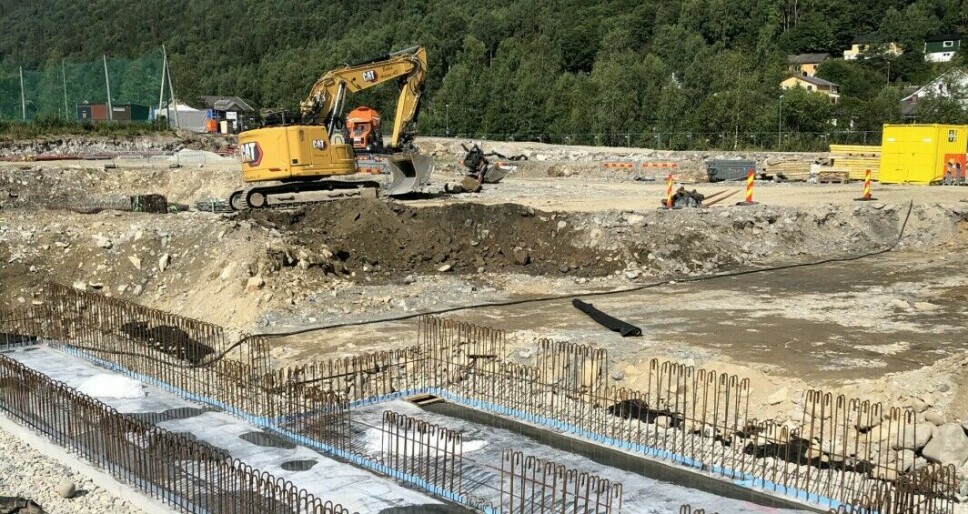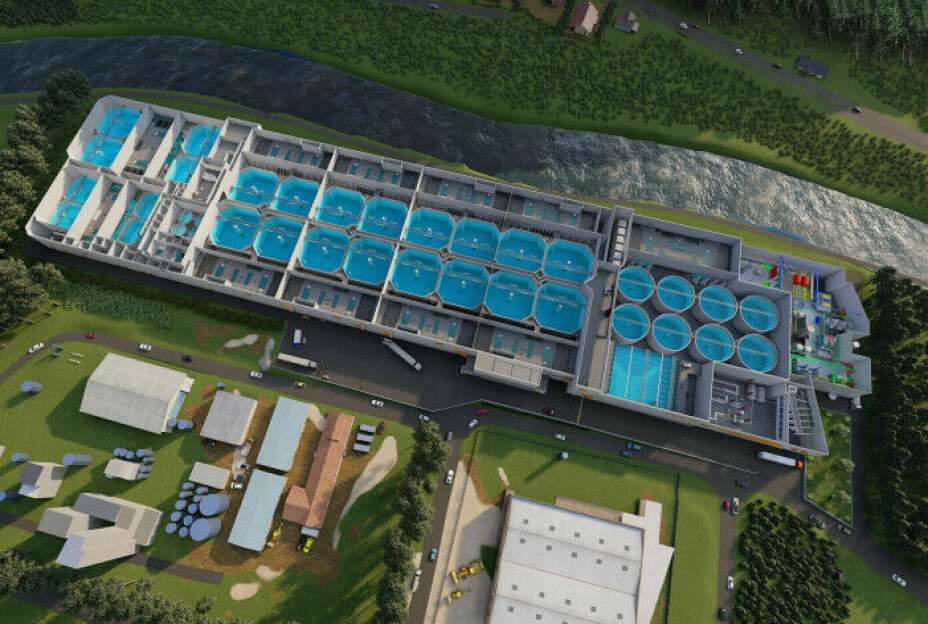
Firm foundations laid for world’s biggest trout RAS
First metres of pipes will soon be in place at Norwegian site
Norway has a number of planned or under construction land-based farms that will produce Atlantic salmon, but Hima Seafood has chosen to focus on trout and wil produce 9,000 tonnes per year.
In Rjukan, in the municipality of Tinn, work on the largest on-land trout facility in the world is under way, and contractor Total Betong (Total Concrete) has started the foundation work for the facility, which is being carried out in collaboration with Eyvi, which will supply the recirculating aquaculture system (RAS) technology. Here, approximately 99.7% of the water will be reused.
The building will have a total length of 320 metres, with a constructed area of about 27,000 m² on two levels. Overall, NOK 2.5 billion (£219 million) will be invested in the project, and the turnkey contract Total Betong has signed is for NOK 1.7 bn. This is a contract for the construction and delivery of the fish farming process, from egg to harvest.
Hatchery handover
Olav Bang, who heads the aquaculture division of Total Betong, told Fish Farming Expert’s sister site LandbasedAQ.no / Kyst.no that the company started construction work at the beginning of August.
“The foundation work is done first, where we dig for the deepest tanks. As of today, some base plates have been cast, and the first meters of pipes will soon be laid.”
Bang said the first major milestone will be handover of the hatchery, which is scheduled for the last quarter of next year.
Together with Eyvi and Hima Seafood, Total Betong has been working on the development, design and detailed engineering of the facility since early 2020, and had planned to start construction in 2021. However, due to the disruption caused by the Covid pandemic and Russia’s invasion of Ukraine, it has taken somewhat longer.
More facilities in future
“The project is of great importance to the company and our partners,” said Bang. “We have been working on the project for a long time, so it is very gratifying when it finally comes to fruition. The project organisation has been ready for quite some time, so they were also happy to be able to start in full. [Having] Hima as a customer is also very exciting, as there are plans for more facilities in due course.”
The final deadline for the project is mid-2025, but the facility will be partially handed over department by department as they are completed, he explained.
Hima Seafood will eventually have around 40 full-time employees, and the local ripple effects will be large.
Data centre link
Hima Seafood has a project under way with the Green Mountain’s Telemark data centre, which is only 800 metres from the farming facility. By connecting the two plants together with a pipe system, Green Mountain can deliver heated water to Hima.
Heat exchanger technology will ensure that the Hima plant can use the energy from the water to achieve the correct water temperature in its RAS solution. The same water will then be returned to Green Mountain after use. At that point, the water will have a lower temperature which can in turn be used to cool the data centre - thus creating a circular project.
